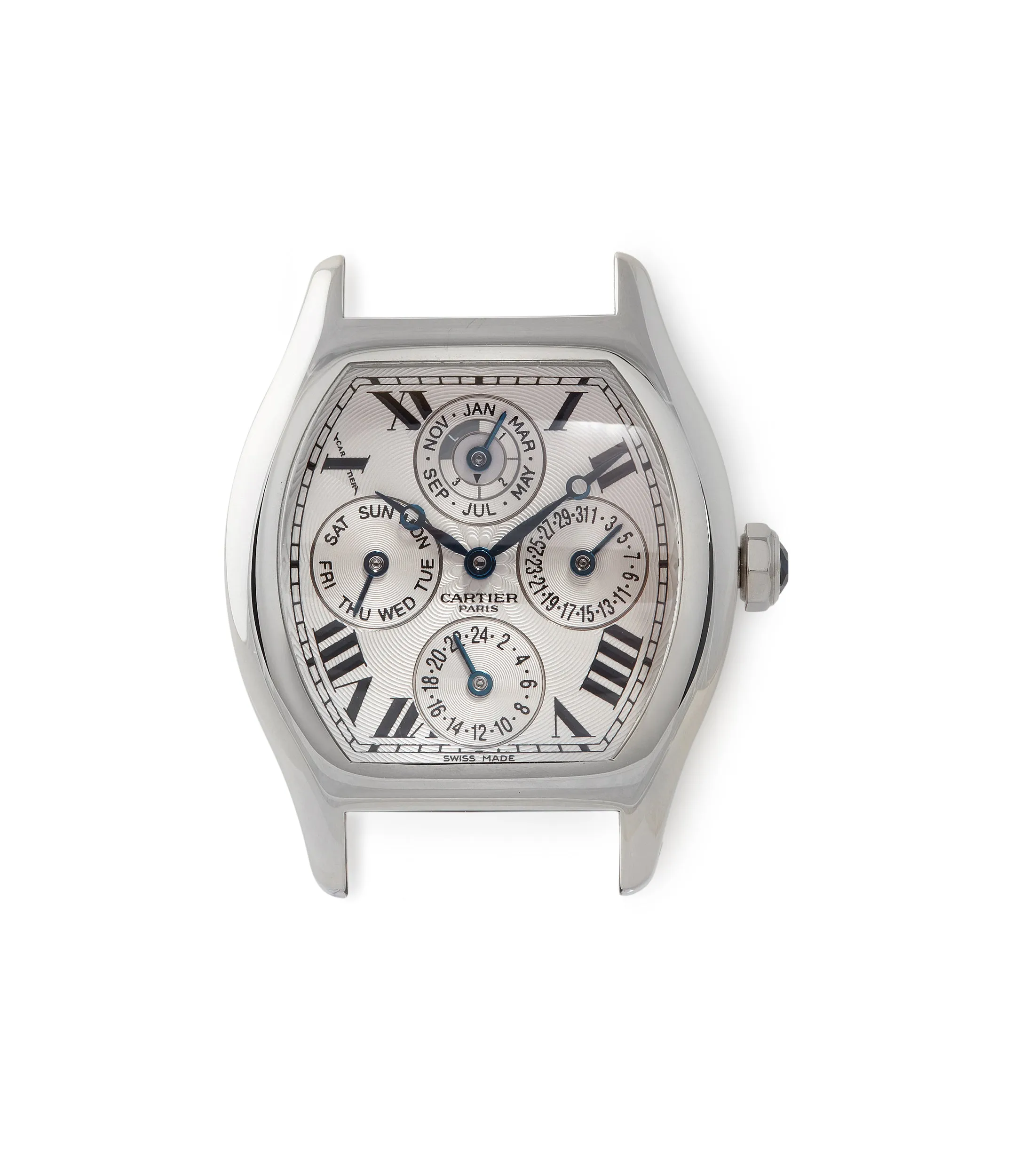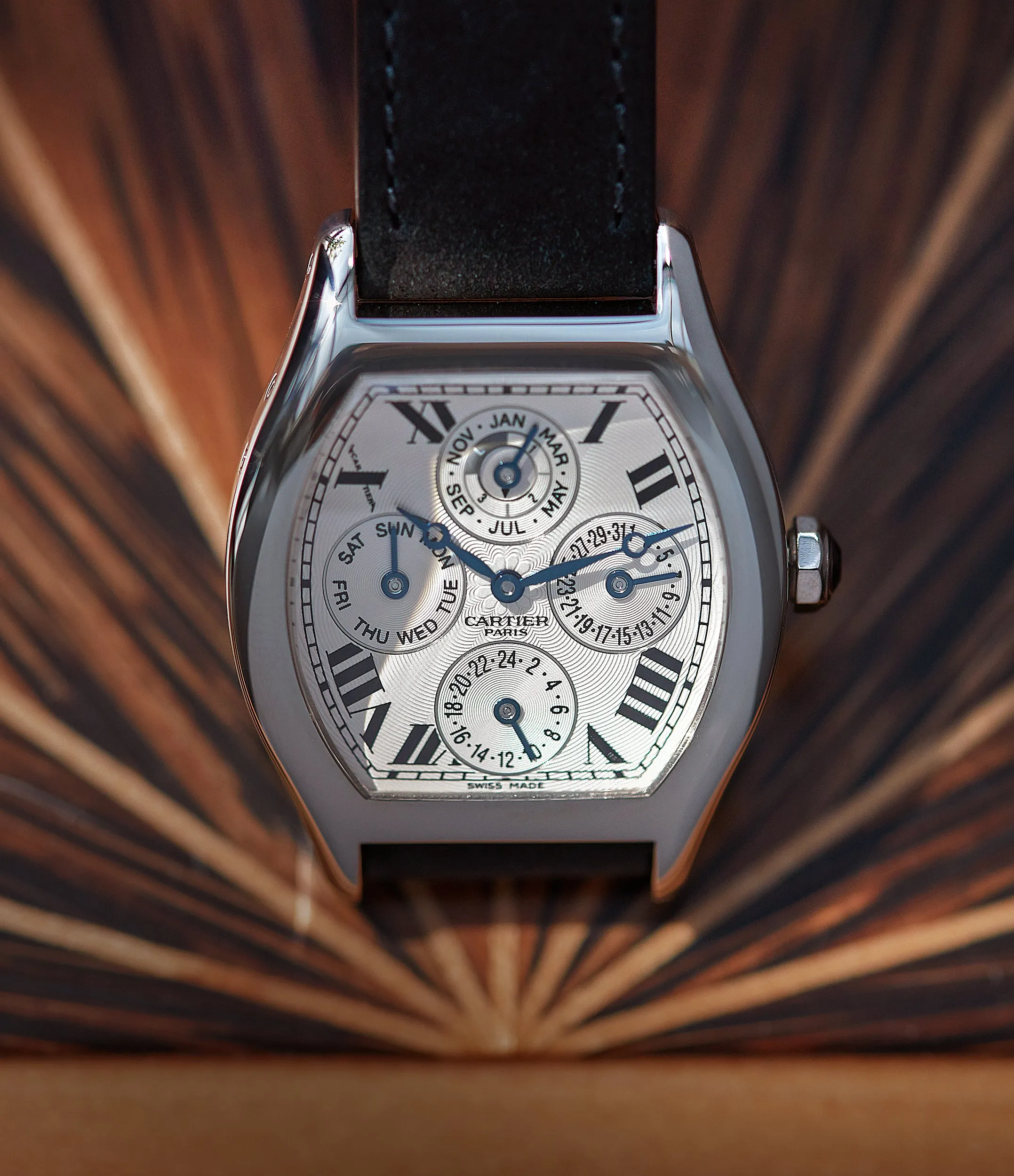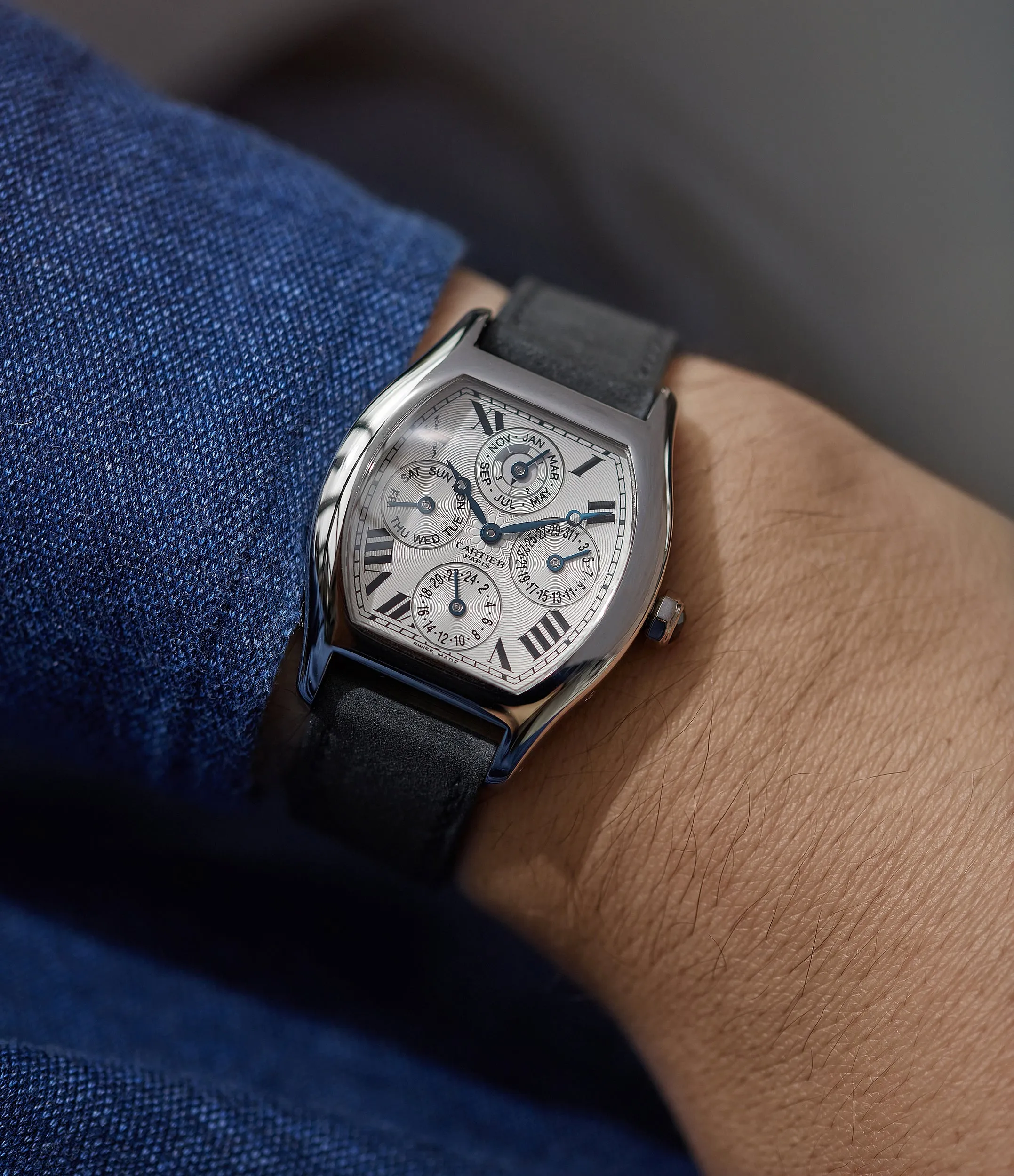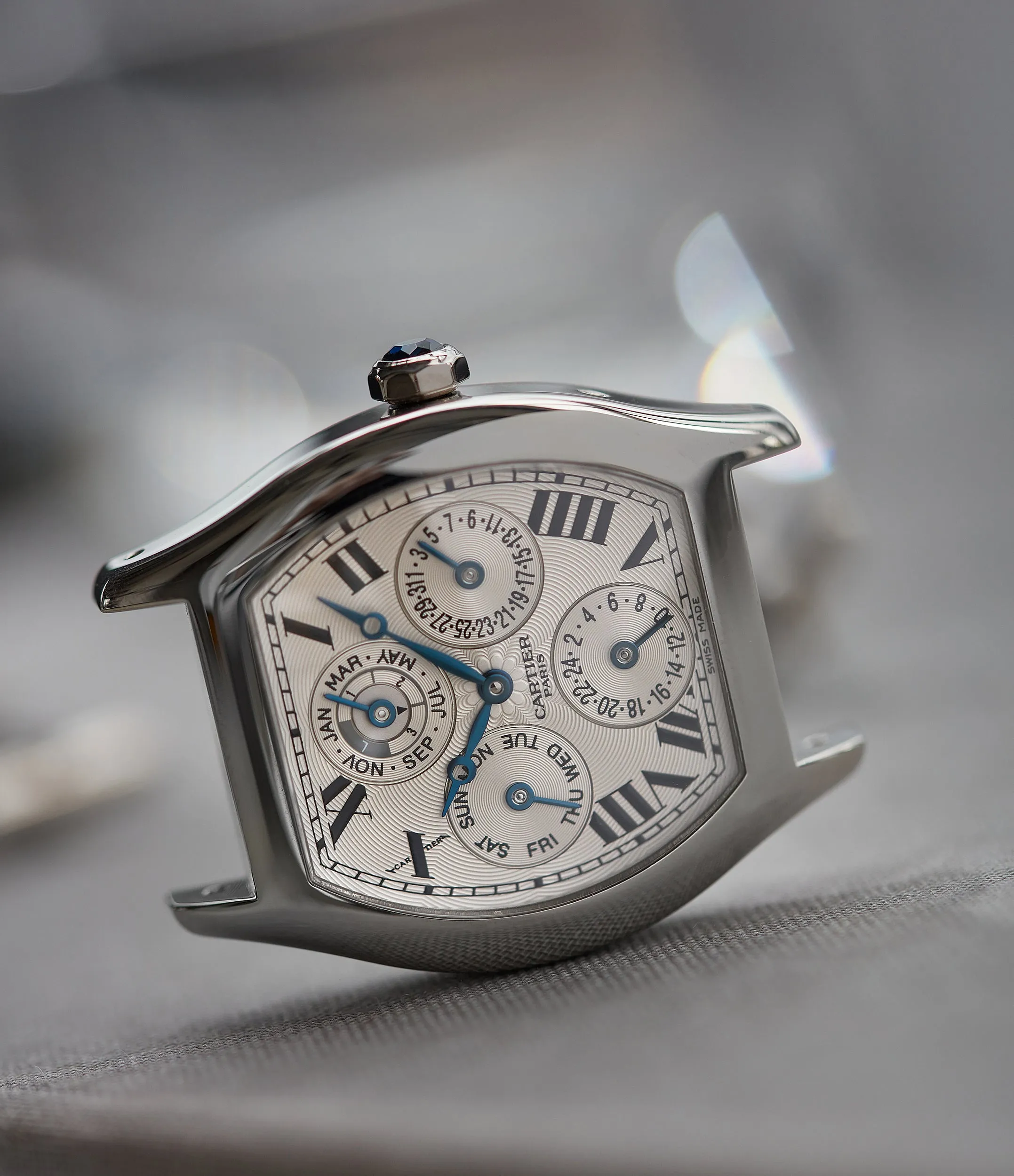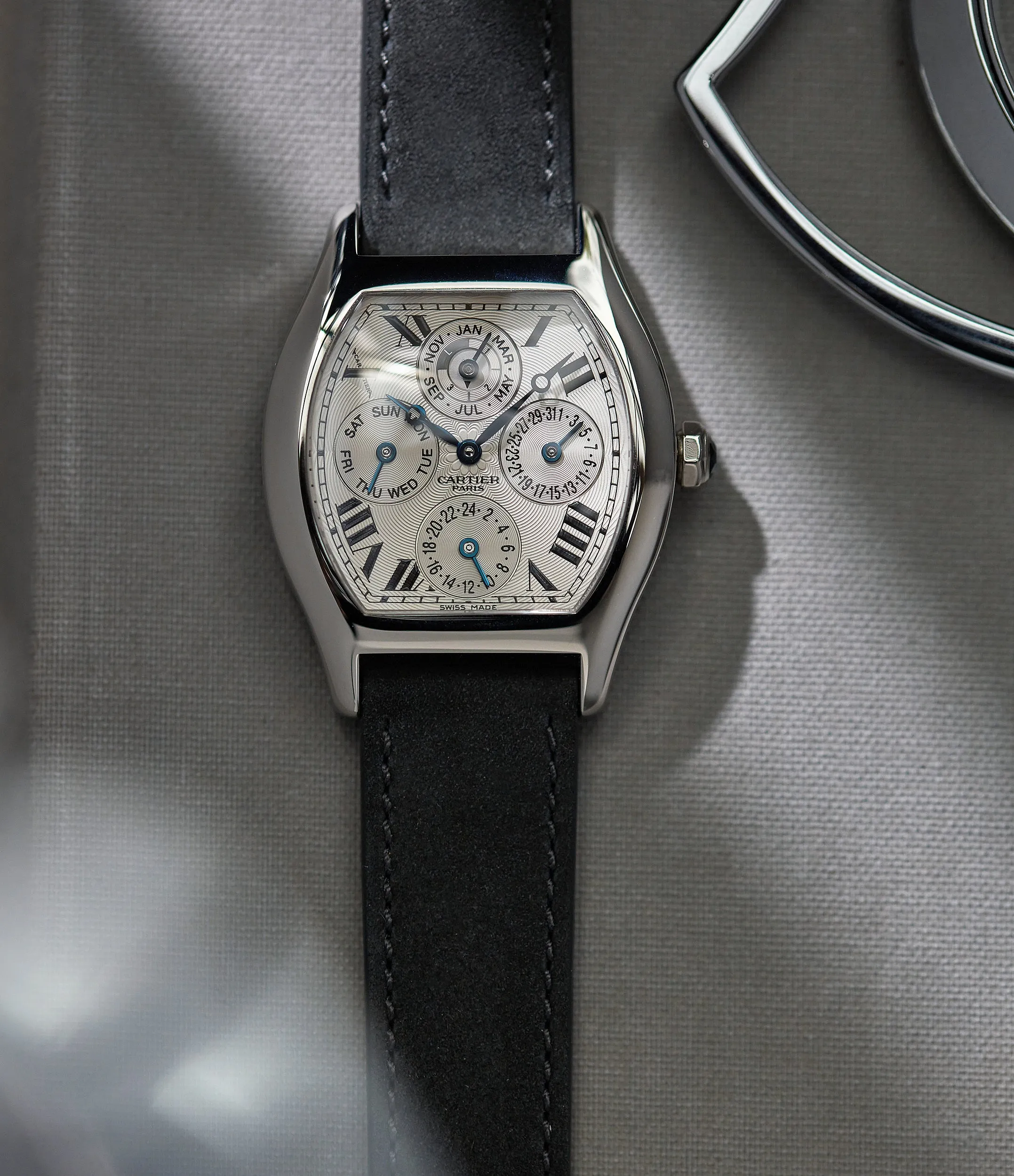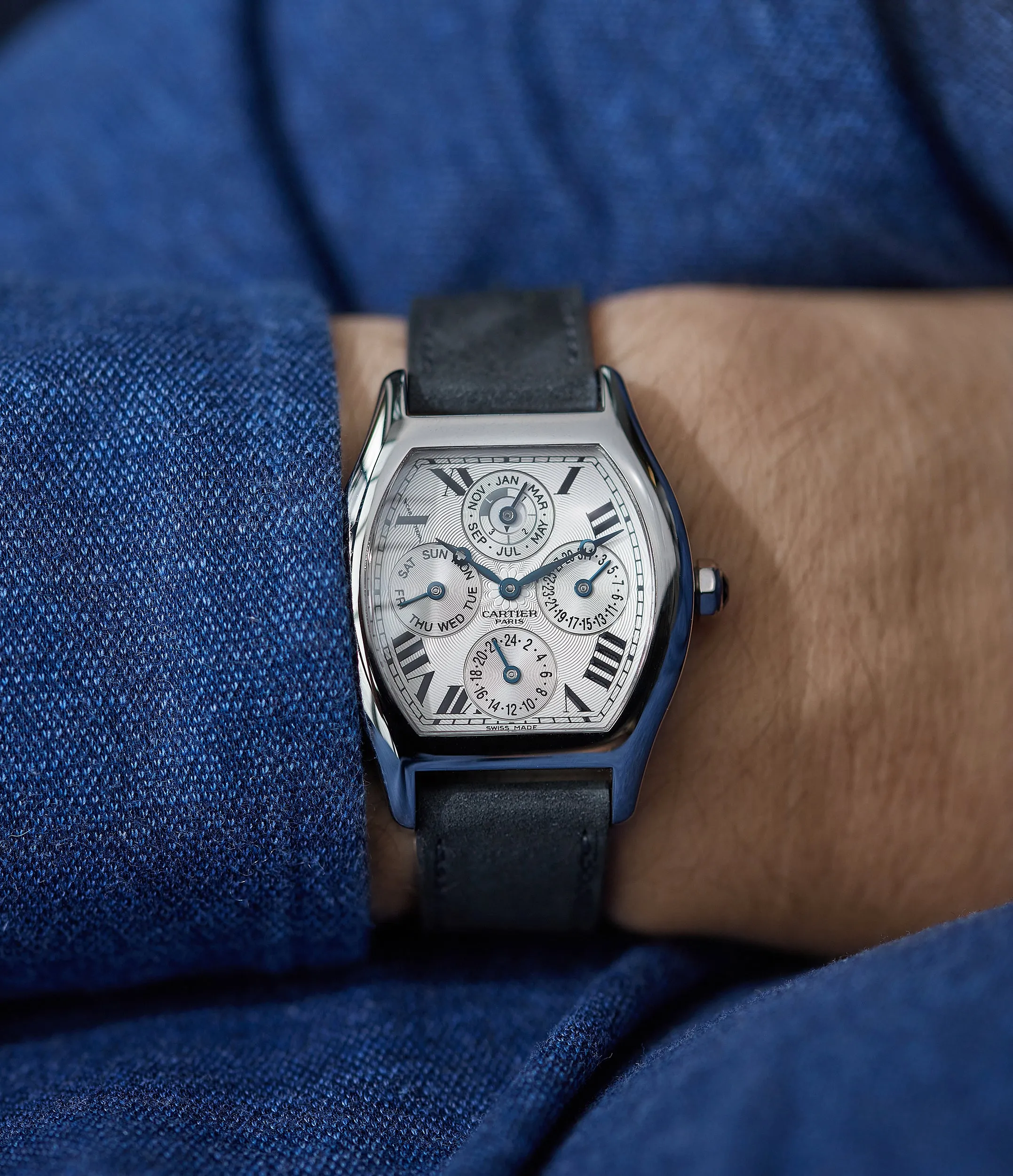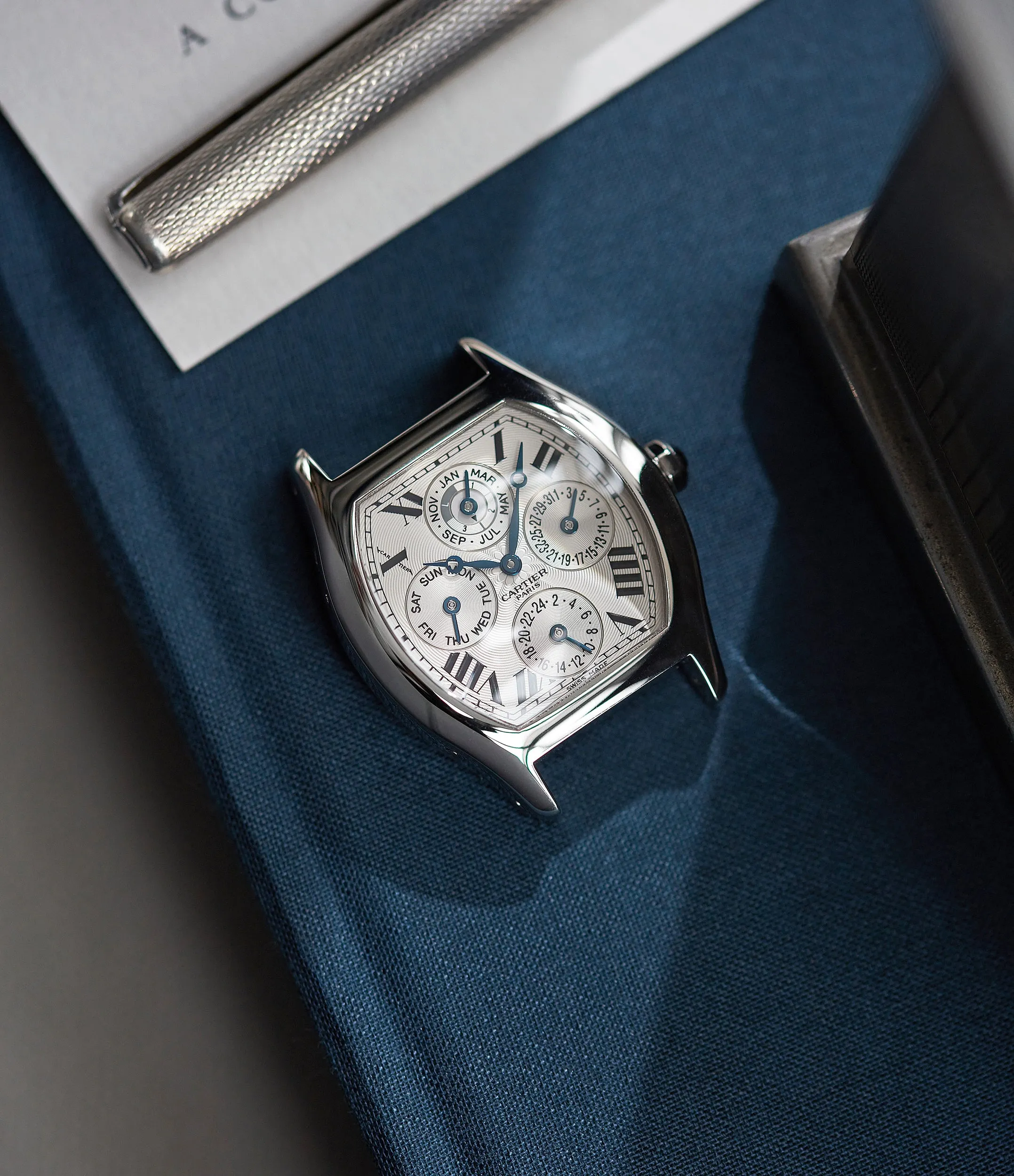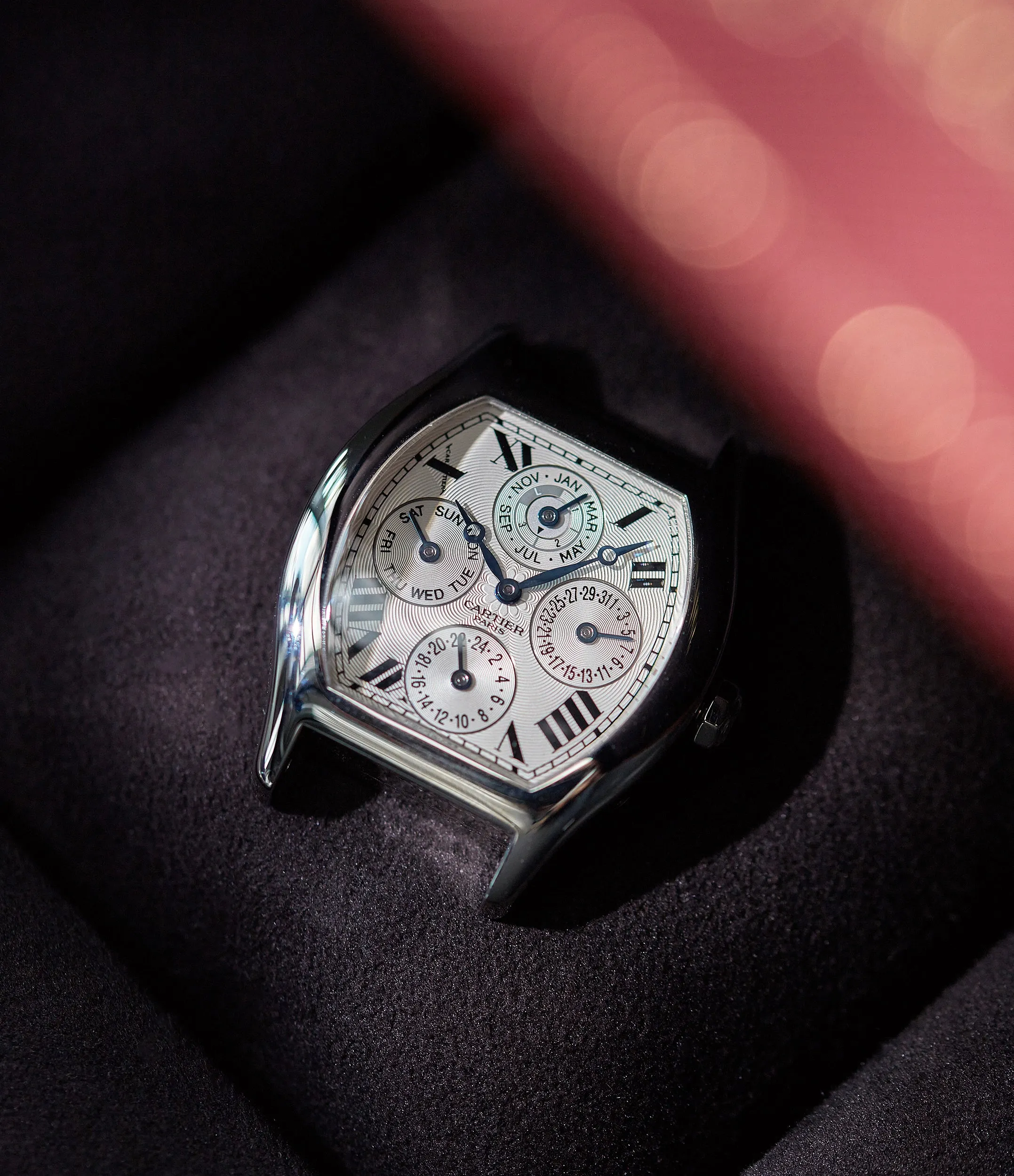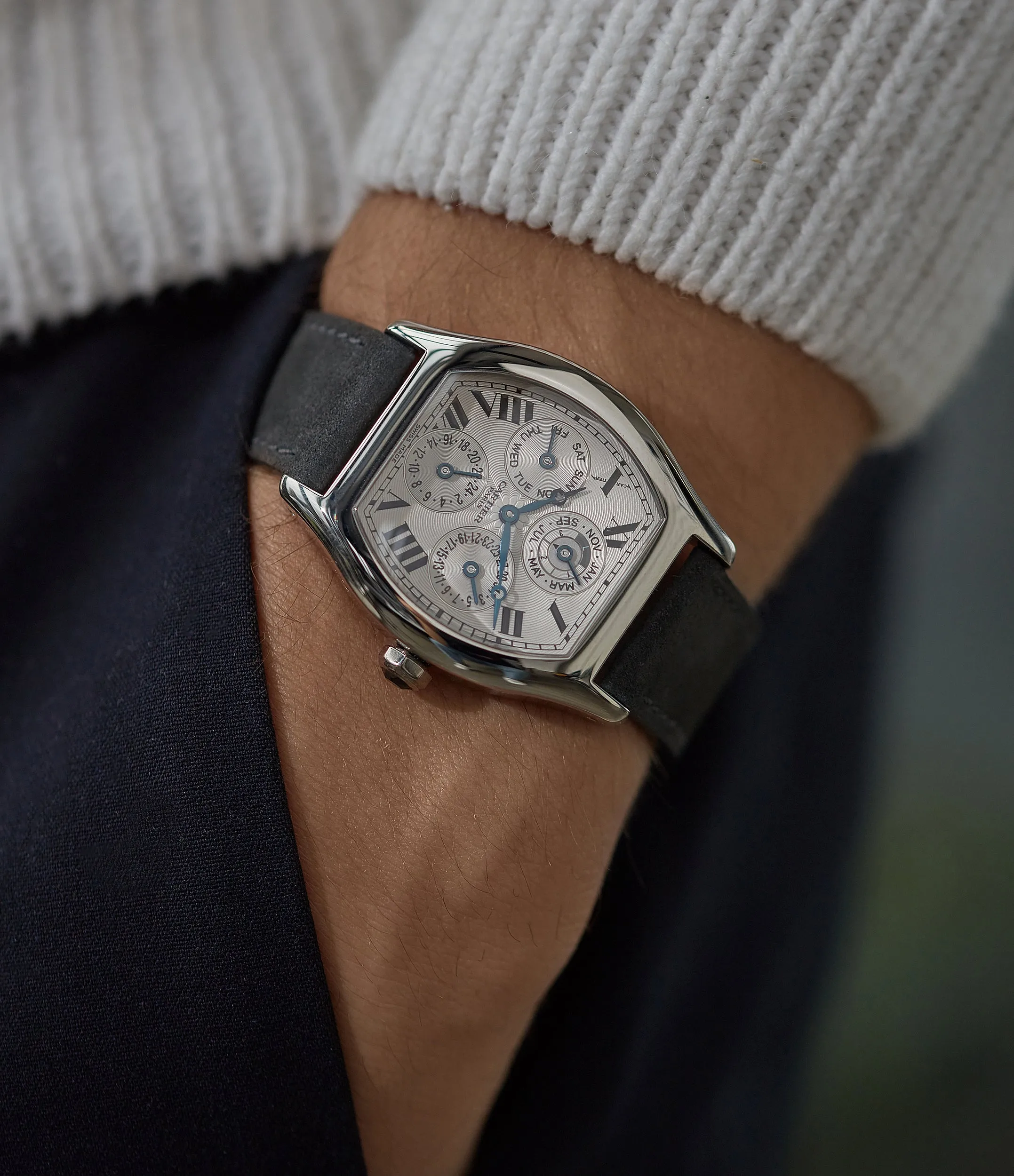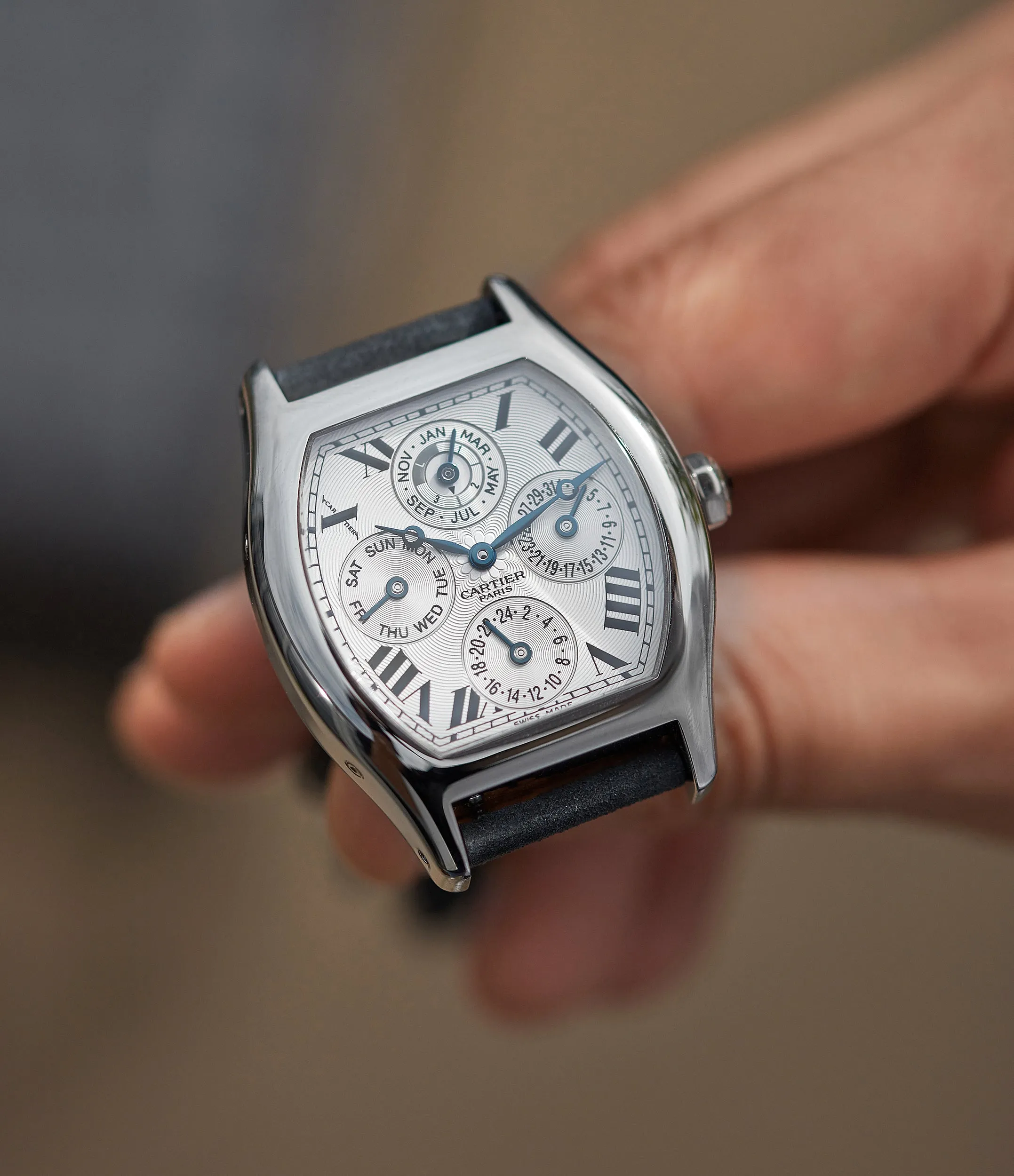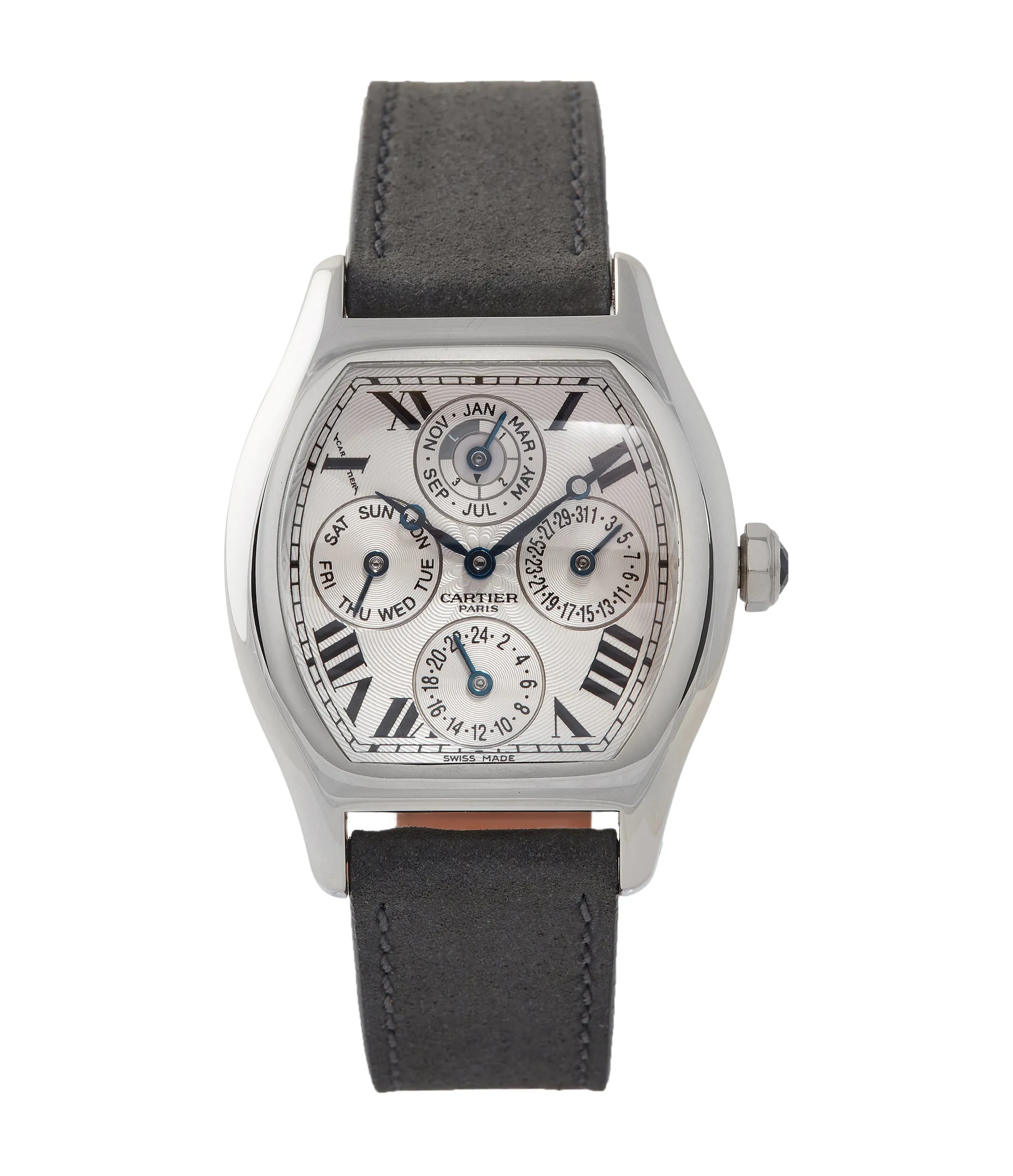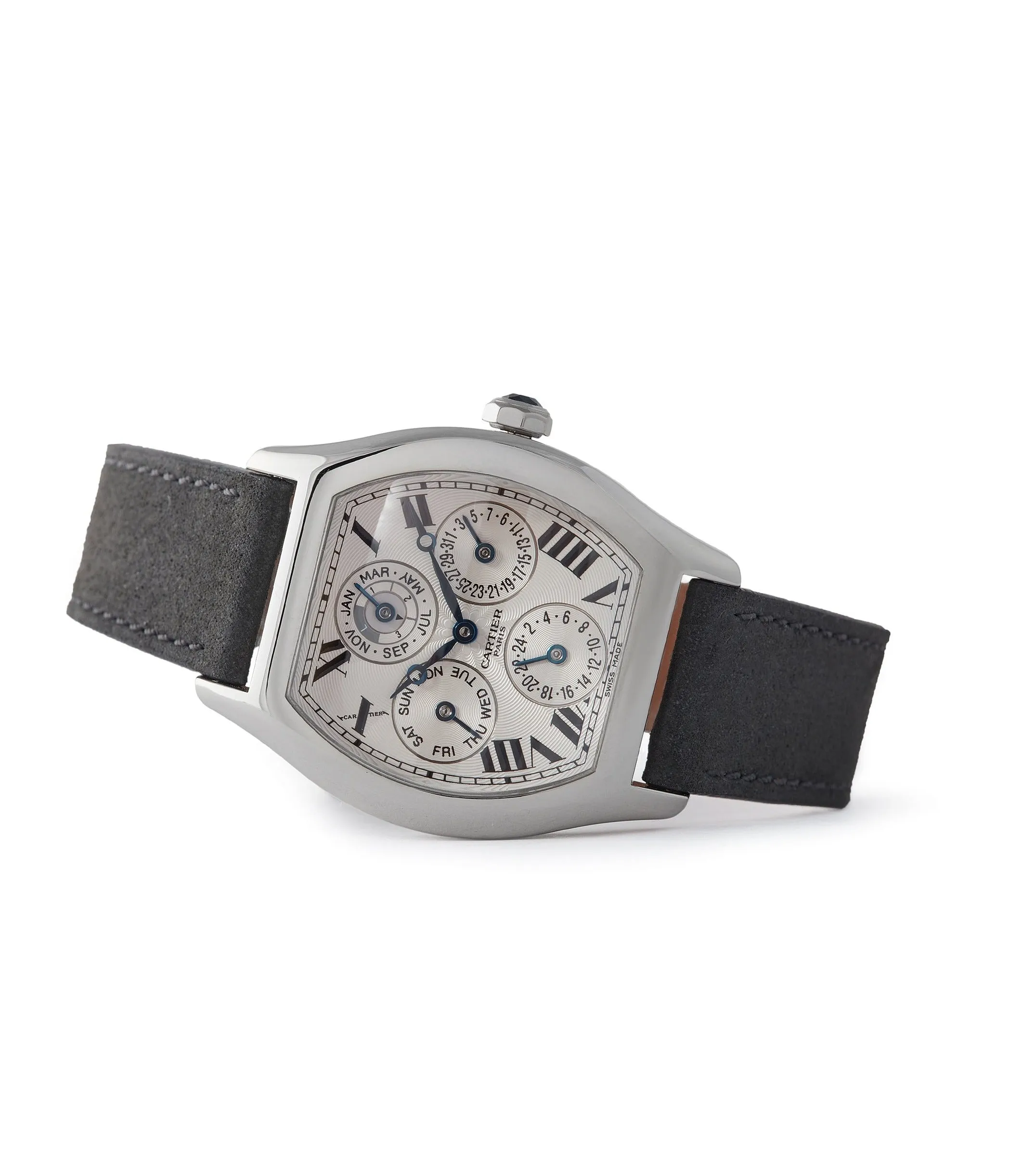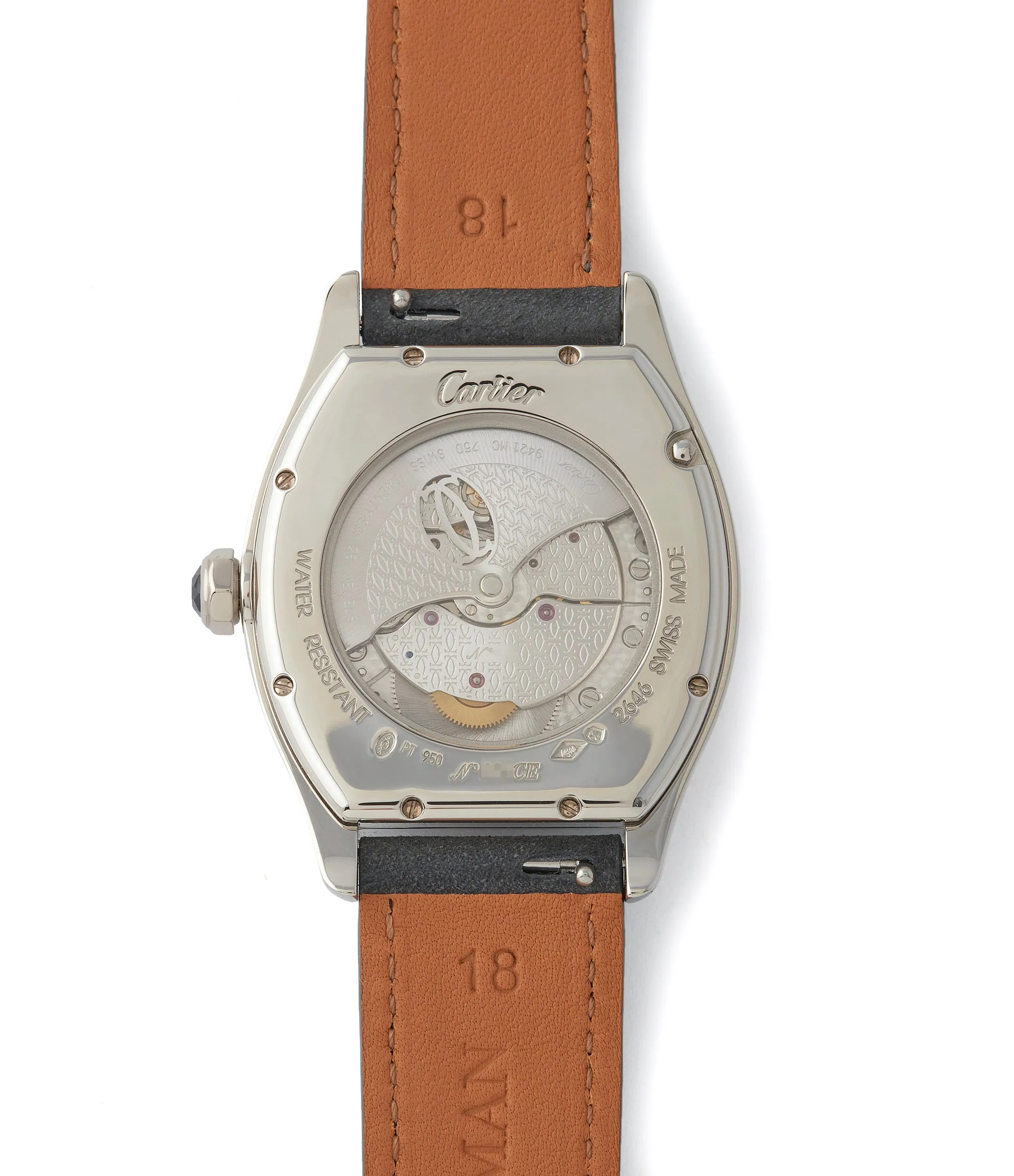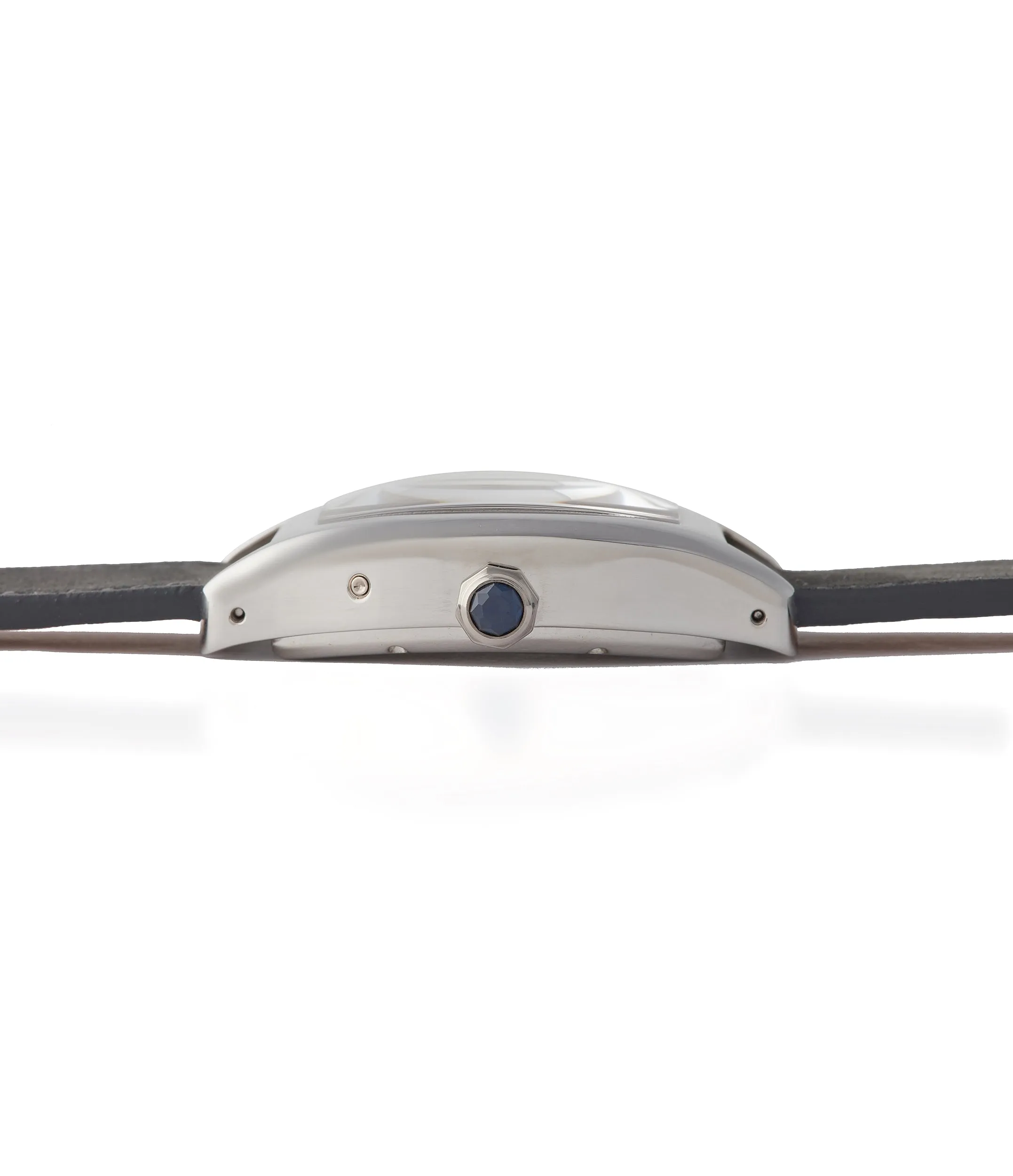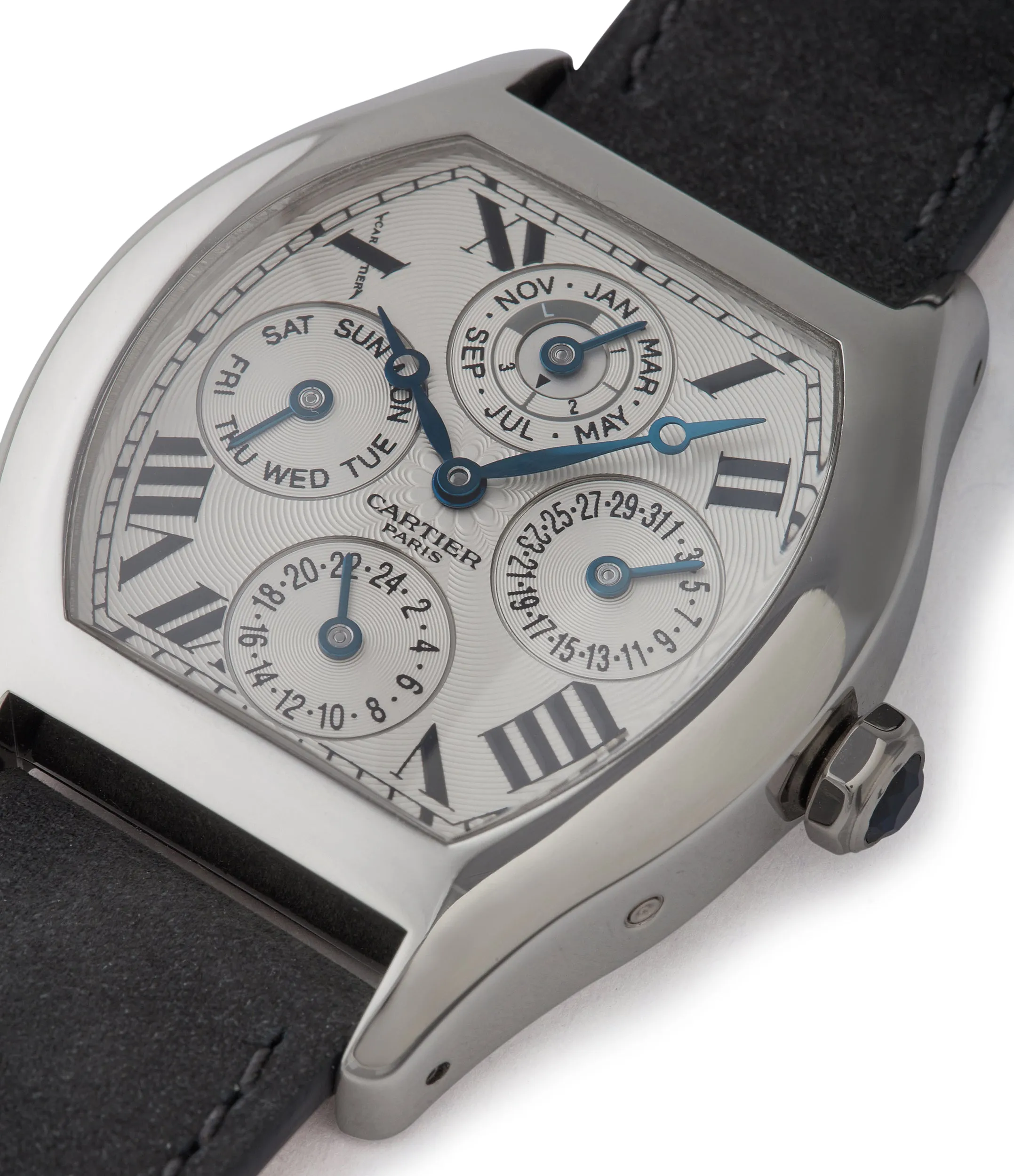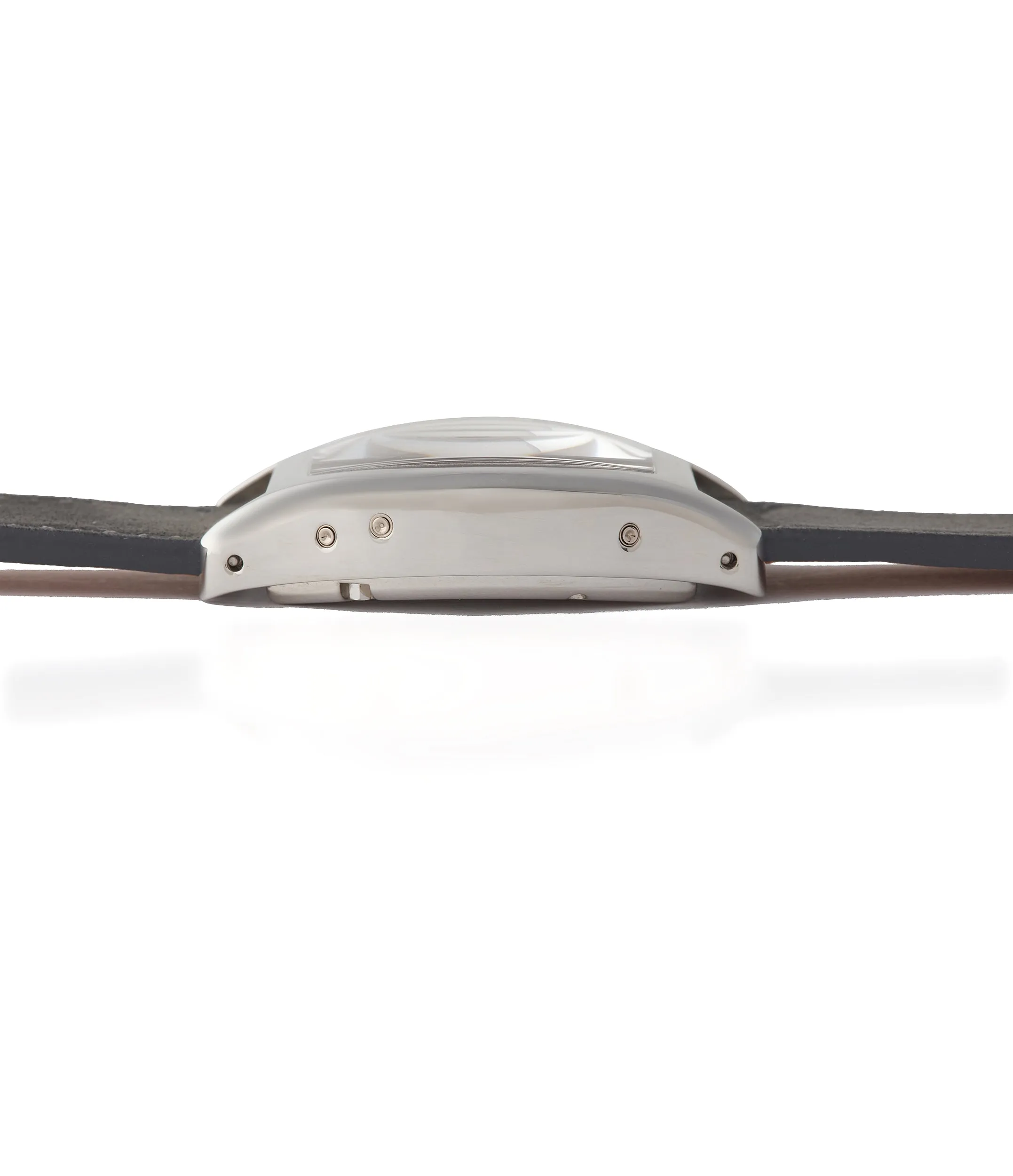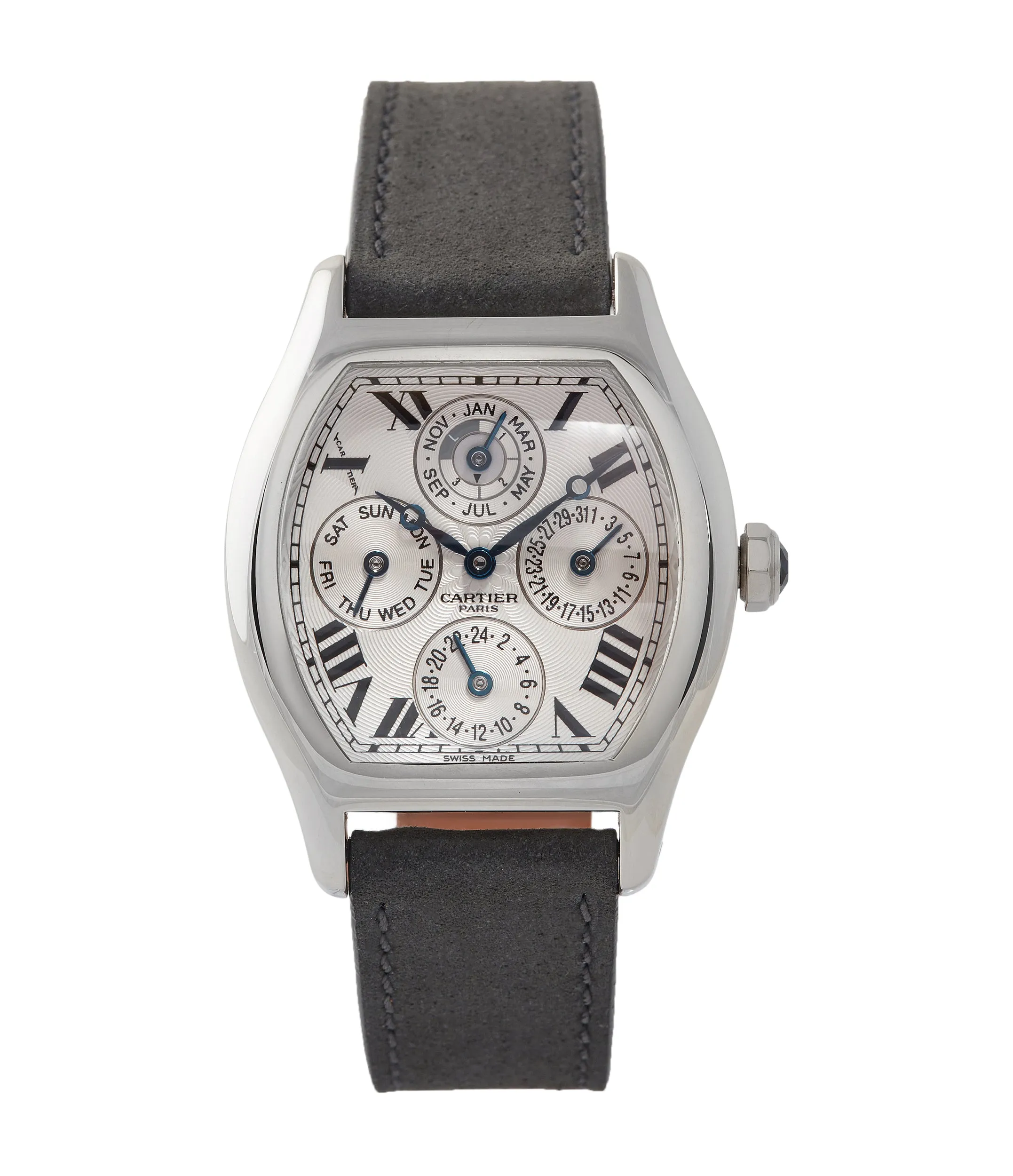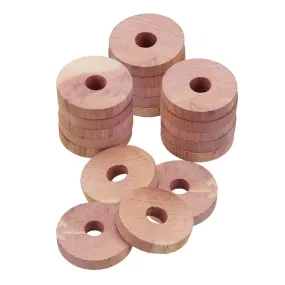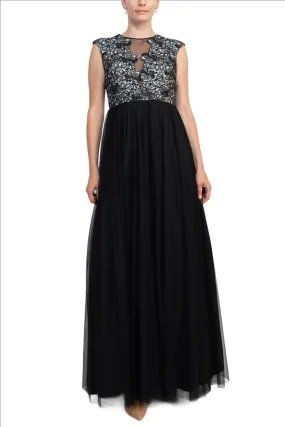This platinum Tortue combines an attractive, elegant case with a practical perpetual calendar complication, powered by an automatic movement. From the Collection Privée Cartier Paris, it features a range of attractive details, from its hand-finished dial to its individually numbered case and decorated movement, visible through the sapphire caseback.
THE COLLECTION PRIVÉE CARTIER PARIS
In the last decade of the 20th century, the industry was still recovering from the impact of the quartz crisis, with consumers just starting to redevelop an interest in mechanical watches. In the midst of this, Cartier aimed to reestablish its credibility as a true watchmaking manufacture. From 1998 to 2008, the Collection Privée Cartier Paris brought back some of the most iconic Cartier designs from the past century, from the to the , combined with high quality mechanical movements. In many cases, these distinctive designs hadn’t been produced for decades, speaking to the jeweller’s desire to place an increased focus on its heritage.
All the Collection Privée Cartier Paris - or CPCP for short - pieces housed high-quality mechanical movements, at a time when the jeweller was mostly associated with quartz. Not possessing the mechanical knowledge in-house, Cartier relied on a range of external suppliers, such as Jaeger-LeCoultre, Frédéric Piguet, Piaget or - a collaborative movement manufacture between , Denis Flageollet and .
All the Collection Privée Cartier Paris watches feature small, distinctive details, intended to set them apart. With the exception of the Cintrée, all of them are signed “Cartier Paris” on the dial, a subtle nod to their vintage pieces. They also display a central rose motif just beneath the hands, which radiates into a classic guilloché. Even the subtle engravings on the caseback are reminiscent of what they used to do in the early 20th century. As for the movements, these were finished in-house by Cartier, with their interlaced “double C” pattern appearing across the collection.
Despite the brand’s global reach at the time, the Collection Privée models were produced in small quantities, with many explicitly limited to 50, 100 or 150 pieces. As for those that weren’t marked as part of a numbered series, evidence suggests that production often remained between 200 to 500 pieces. Eventually, partially due to difficulties and delays in getting parts from their various suppliers, the CPCP program came to an end.
The Tortue
First launched in 1912, the Tortue was the third wristwatch ever designed by Cartier, surprisingly predating the Tank by a handful of years. Inspired by the shape of a tortoiseshell, it was initially introduced as a time-only piece, though the French jeweller rapidly ventured into creating more complicated versions of the design, such as a minute repeater or a monopusher chronograph, both of which were unusual for the early 20th century.
Years later, the Tortue design became a core pillar of the Collection Privée Cartier Paris. In fact, the Tortue was the best-selling Collection Privée model in 1999, 2000, 2003, 2004 and 2005 – half the time the range was available. A range of different complications were integrated into the distinctive case, from a perpetual calendar to a . Understood to have been released in 2003, the Tortue ref. 2646 combines a highly complicated movement with the practicality of an automatic caliber.
A Contemporary Design
This Tortue 2646 displays its perpetual calendar functions in a subtle, yet intuitive, way. The four subdials contrast effectively with a guilloché pattern, which emanates from the center, where you can find a small rosette. Evidence suggests that the inspiration for this central rose came from vintage Cartier clocks, which often featured the distinctive decoration. The rail track and Roman numerals are stamped directly onto the dial in black ink, whilst the blued steel hands are executed in a legible Breguet-styled shape.
The sub-dial at three o'clock shows date, whilst its mirror image at nine o'clock shows the days of the week, in English. At twelve o'clock, an arrow disc points to the relevant year, with the months displayed around this using a small blued hand. At six o'clock, Cartier chose to integrate a practical 24-hour display, which helps give balance to the overall design. Despite the wealth of information, the dial remains balanced and legible.
As is to be expected, the dial is signed “Cartier Paris” at 12 o’clock, a nod to some pieces from the early 20th century, which had the city’s name inscribed below the brand. Across one half of the ten o'clock Roman numeral, "Cartier" has been delicately applied in black ink.
This Tortue 2646 features a rare, platinum case. More commonly executed in yellow, or white gold, platinum is the most seldom seen metal across the lifespan of all CPCP watches. The two part Tortue case has elegant, curved lines, with polished surfaces found throughout. It measures 34mm by 33mm, with a lug to lug length of 43mm This allows the watch to remain classic in appearance, whilst also being suited to contemporary tastes. At 11mm in thickness, it also manages to maintain some presence on the wrist and easily fits under the cuff of a shirt. This is amongst the first 40 pieces made, as evidenced by the "03X" engraving on the caseback and movement.
The Movement
This platinum Cartier Tortue is powered by the Calibre 9421MC, which is based on a Girard Perregaux ébauche equipped with a Dubois Depraz perpetual calendar module. The automatic movement features 33 jewels and a mono-metallic balance, with 48 hours of power reserve.
THE SET
This Cartier, Collection Privée Cartier Paris comes with its outer box, inner boxes, manual, an unsigned Certificate of Origin and a sealed setting pin. It comes on a grey nubuck strap, as well as its black alligator strap and corresponding platinum tang buckle.
If sold within the United Kingdom, this Cartier Tortue 2646 will be subject to 20% VAT. Viewings are currently suspended for the time being.
Closer look
| Brand: | Cartier |
| Model: | Tortue 2646 |
| Movement: | automatic-winding Cal. 9421MC |
| Functions: | hours, minutes, day, date, month, leap year indicator, second time zone |
| Features: | guilloché dial, display back, blue steel hands |
| Case: | 34mm x 33mm (with a lug to lug length of 43mm) |
| Crystal: | sapphire front and back |
| Strap: | grey nubuck strap, black alligator Cartier strap, platinum Cartier deployant clasp |
| Year: | c. 2000 |
| Box & papers: | outer box, inner boxes, manual, unsigned Certificate of Origin, sealed setting pin |




